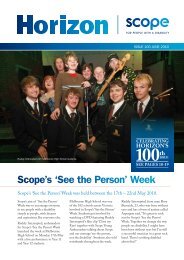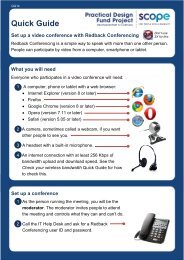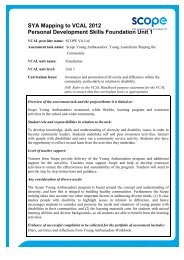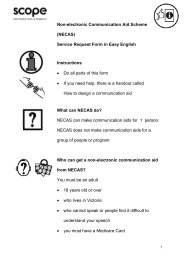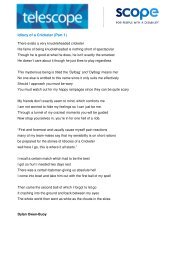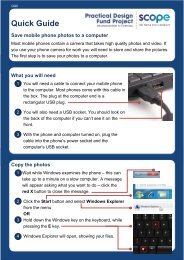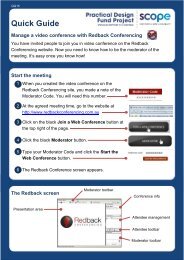Positive behaviour support Getting it right from the start
Positive behaviour support Getting it right from the start
Positive behaviour support Getting it right from the start
You also want an ePaper? Increase the reach of your titles
YUMPU automatically turns print PDFs into web optimized ePapers that Google loves.
46 <strong>Pos<strong>it</strong>ive</strong> <strong>behaviour</strong> <strong>support</strong>: <strong>Getting</strong> <strong>it</strong> <strong>right</strong> <strong>from</strong> <strong>the</strong> <strong>start</strong> - Facil<strong>it</strong>ators reference manual<br />
PowerPoint 66*<br />
• The abil<strong>it</strong>y to im<strong>it</strong>ate<br />
Im<strong>it</strong>ation is a skill that we develop very early. During our communication development we are<br />
im<strong>it</strong>ating <strong>the</strong> actions, sounds and eventually words of <strong>the</strong> people around us.<br />
Does <strong>the</strong> person you <strong>support</strong> have intentional communication skills?<br />
Give examples that <strong>support</strong> your view.<br />
The Communication continuum<br />
In order to identify a person’s communicative abil<strong>it</strong>ies we need to think of <strong>the</strong> development<br />
of communication as occurring on a continuum: <strong>from</strong> an unintentional stage through to an<br />
intentional symbolic stage. As we are all developing and learning to communicate we progress<br />
through this continuum.<br />
We learn that by communicating we can have an effect on <strong>the</strong> people in our environment, and<br />
can use <strong>the</strong>m to obtain what we want and need (cause and affect).<br />
For example: Sally does not use speech to communicate and she is in a wheel chair. Sally wants<br />
her favour<strong>it</strong>e song turned up louder, but she can't reach, so she claps to gain <strong>the</strong> attention of Fred<br />
and points at <strong>the</strong> stereo. Fred asks Sally what she wants and she again gestures by pointing in <strong>the</strong><br />
direction of <strong>the</strong> stereo. Fred turns up <strong>the</strong> music. Sally has learnt <strong>the</strong> link between communication and<br />
manipulating her environment.<br />
Some people w<strong>it</strong>h a disabil<strong>it</strong>y have not yet developed all of <strong>the</strong> prerequis<strong>it</strong>e skills needed to be<br />
an intentional communicator. O<strong>the</strong>rs have, but are not yet using symbols to communicate. In<br />
order to <strong>support</strong> <strong>the</strong> communicative needs of people and develop effective <strong>support</strong> plans we<br />
must have an understanding of where <strong>the</strong> person’s communication skills are on <strong>the</strong> continuum.<br />
A tool such as <strong>the</strong> ‘Checklist of communication competencies’ 10 can be used to help you<br />
determine this and best plan for <strong>the</strong> <strong>support</strong> required.<br />
10. Bloomberg K, & West, D (1999), The Triple C : Checklist of Communication Competencies.<br />
Triple C Copy<strong>right</strong> of SCIOP



